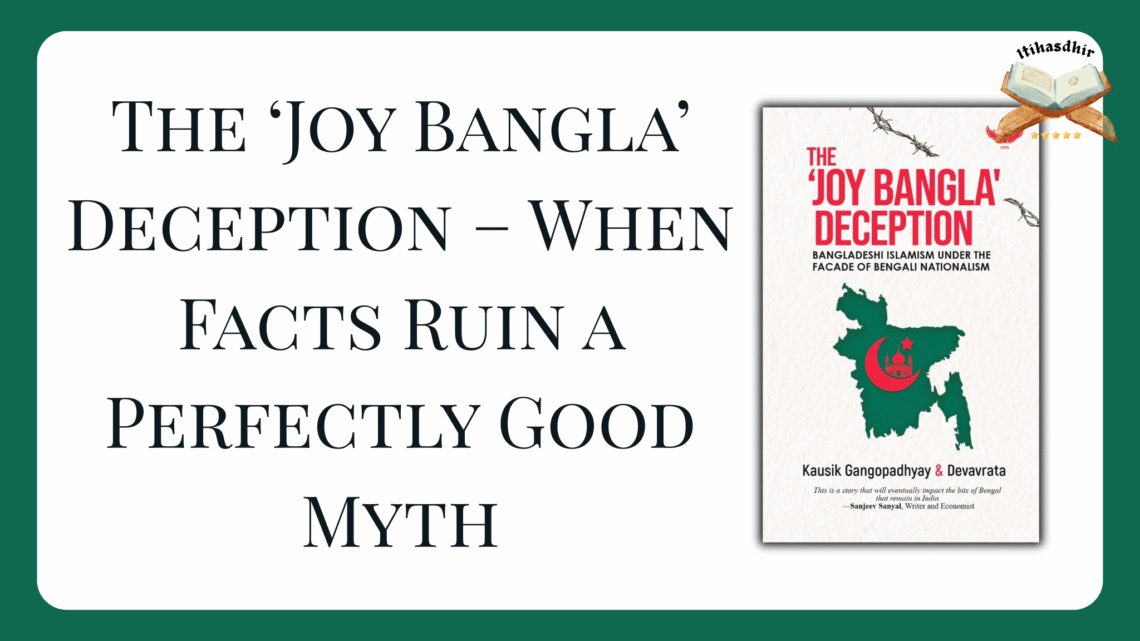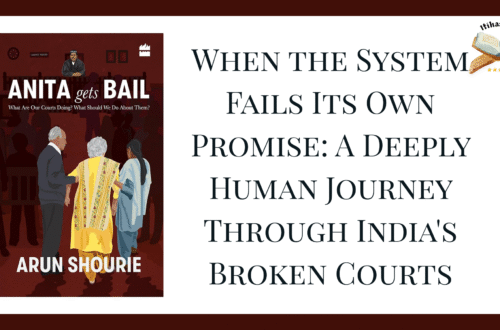
The ‘Joy Bangla’ Deception – When Facts Ruin a Perfectly Good Myth
Ah yes, Joy Bangla — that glorious slogan of liberation, unity, and secular idealism. The golden chant that promised a utopia of linguistic harmony, free from the tyranny of religion. Or so we were told.
Then along comes Prof. Kausik Gangopadhyay, wielding something utterly outrageous: data. And logic. And historical evidence. Honestly, the nerve of this man.
In The ‘Joy Bangla’ Deception, Gangopadhyay does the unthinkable. He suggests that maybe, just maybe, the entire romanticised narrative of Bangladesh’s secular birth is a wee bit overstated. Heresy, I know. He dares to point out that the movement which began as a fight for linguistic rights quickly shapeshifted into a comfortable cover for Islamic majoritarianism, all while India applauded from the sidelines with a confused grin and a sari full of Nehruvian delusions.
But do not worry. He does not stop there. He even has the gall to ask uncomfortable questions like: Why were Hindus still fleeing Bangladesh decades after liberation? Or how exactly did a supposedly secular nation end up adopting Islam as its state religion in 1988? Spoiler alert: It is not because everyone suddenly forgot how to conjugate Bengali verbs.
Gangopadhyay’s offence is not just his willingness to ask these questions but the maddening precision with which he answers them. He applies the economist’s scalpel to what is usually treated as sacred ideological flesh. No teary tributes to Tagorean brotherhood. No dewy-eyed nostalgia about jute and fish and freedom. Instead, we get demographic trends, policy shifts, sociopolitical data and constitutional developments that paint a far less flattering picture.
At the heart of the book is the proposition that Joy Bangla was not a secular rupture with Pakistan’s Islamic nationalism but a transitional costume change. Out with Urdu, in with Bengali, but the script of religious hegemony remained suspiciously intact. Language may have won the battle, but religion quietly claimed the war.
In one particularly devastating analysis, Gangopadhyay dissects how even under the leadership of the supposedly secular Awami League, Islamic orthodoxy was not only tolerated but actively legitimised. A nation born in the name of pluralism gradually, almost politely, slid into confessional politics. It is almost poetic, if it were not so predictable.
And then there is his original theoretical offering — the Linear Theory of Social Evolution. A framework that dares to challenge the Western fantasy of societies always evolving towards liberal democracy and diversity. According to Gangopadhyay, societies can just as easily evolve into more sophisticated forms of exclusion while retaining the optics of inclusion. In short, Bangladesh got a new national anthem and kept the same old script.
Perhaps the most amusing aspect of this book is its quiet dismantling of Indian intelligentsia’s self-deception. India, the ever-generous neighbour, imagined it had midwifed a secular Bengali utopia in 1971. In reality, it had merely helped deliver a slightly rebranded version of Islamic nationalism, now draped in Rabindrasangeet. Naturally, most Indian academics would prefer to look away. After all, it is terribly gauche to question the integrity of other postcolonial liberation movements.
Stylistically, the book is all sharp edges hidden behind velvet gloves. Gangopadhyay never shouts and never sermonises. He lets facts do the speaking and trusts that the reader is intelligent enough to spot the implications. Which, of course, makes the book all the more dangerous. Because when myths unravel themselves without melodrama, it becomes harder to ignore them.
In sum, The ‘Joy Bangla’ Deception is a forensic audit of a national myth. Calm, methodical, and unrelenting. It is also, quite possibly, the most offensive kind of book — one that is right.
Avoid it if you prefer history to remain a soothing bedtime story. But if you are brave enough to accept that even the most celebrated revolutions can wear masks, then pick it up and prepare to have a few illusions shattered.
Just do not read it in a South Asian Studies department. It may cause actual discomfort.
Watch the discussion with the author:

Aditi Joshi founded Itihasdhir in 2023. She facilitates discussions on Indian history and the influence of historians. Currently, Aditi is a contributor of the VHPA initiative Stop HinduDvesha and serves as an Editor at Garuda Prakashan. A history graduate and folklore enthusiast, she is also an artist and translator, blending creativity and research to illuminate India’s cultural richness.





